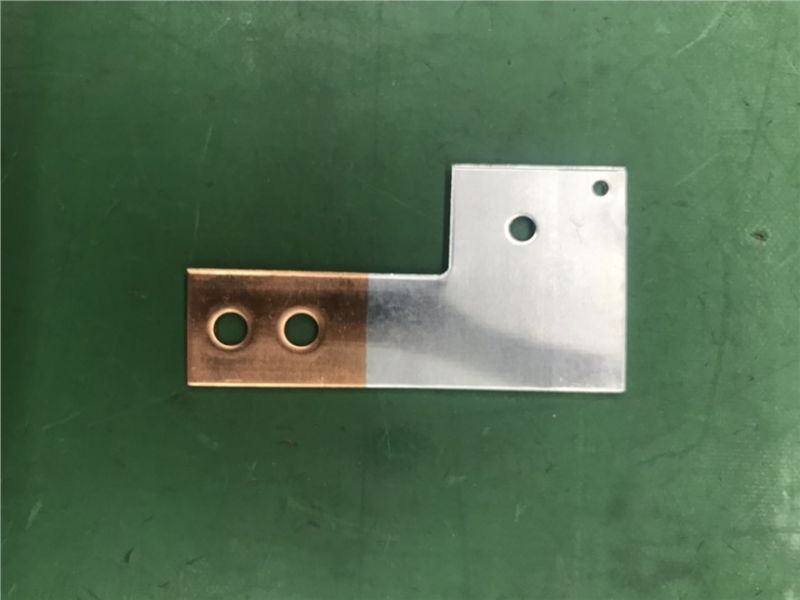Breakthroughs continue to occur in new energy battery technology, leading to changing requirements for battery structural components. Currently, many lithium battery manufacturers are welding copper strips onto the aluminum strips that connect the battery electrodes. In traditional processing methods, effective welding between copper and aluminum strips is hindered by material limitations, either resulting in unsuccessful welding, insufficient welding strength, or prohibitively high costs.
In order to meet customer and market demands, the technical team at Dongguan Mares has utilized molecular diffusion equipment to achieve welding between aluminum and copper strips. The welding results are shown in the image above: the appearance is neat, the weld seam is small, and the pull strength is high. This product has been accepted and recognized by numerous new energy battery customers.
Molecular diffusion welding technology demonstrates excellent results when applied to most metal materials, particularly in welding metals with high thermal conductivity such as aluminum, aluminum alloys, and copper, ensuring higher quality and reliability.
Welding between copper and aluminum strips is primarily suitable for face-to-face connections. Due to aluminum’s high reactivity, it is prone to oxidation during the welding process. Therefore, precise control of welding temperature and time is essential to prevent distortion of the copper-aluminum strips.
Pre-welding Cleaning:
Before performing diffusion welding, workpieces with oil stains on the surface of copper-aluminum strips should be cleaned with organic solvents or organic solvent vapor (such as acetone). The oxide layer within a 10mm range of the welding area should be thoroughly cleaned using metallographic sandpaper or emery files, especially the inner surface of the joint.
Welding Process:
Maintaining consistent alignment of the copper-aluminum strip workpieces in the appropriate position throughout the molecular diffusion process is crucial for ensuring effective precision. This can typically be achieved using positioning fixtures, or with the assistance of other auxiliary fixtures. Calculating the welding temperature and holding pressure time based on the welding thickness and contact area of the copper and aluminum strips is essential to prevent quality issues such as thermal deformation.
Post time: Oct-19-2023

